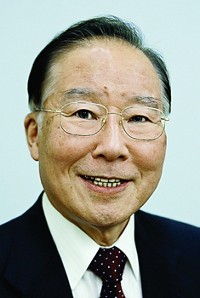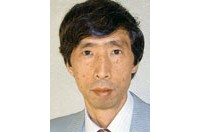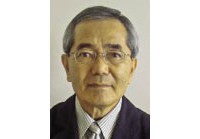Advertisement
Grab your lab coat. Let's get started
Welcome!
Welcome!
Create an account below to get 6 C&EN articles per month, receive newsletters and more - all free.
It seems this is your first time logging in online. Please enter the following information to continue.
As an ACS member you automatically get access to this site. All we need is few more details to create your reading experience.
Not you? Sign in with a different account.
Not you? Sign in with a different account.
ERROR 1
ERROR 1
ERROR 2
ERROR 2
ERROR 2
ERROR 2
ERROR 2
Password and Confirm password must match.
If you have an ACS member number, please enter it here so we can link this account to your membership. (optional)
ERROR 2
ACS values your privacy. By submitting your information, you are gaining access to C&EN and subscribing to our weekly newsletter. We use the information you provide to make your reading experience better, and we will never sell your data to third party members.
Synthesis
ACS Award for Creative Work in Synthetic Organic Chemistry
Recipients are honored for contributions of major significance to chemistry
by A. Maureen Rouhi
January 7, 2008
| A version of this story appeared in
Volume 86, Issue 1

Sponsored by Aldrich Chemical Co.
Masakatsu Shibasaki, chemistry professor and dean of the Graduate School of Pharmaceutical Sciences of the University of Tokyo, is being recognized for his outstanding contributions to asymmetric catalysis.
Shibasaki has established himself as a leader in the development of new methods for asymmetric synthesis, a colleague says. His best known contribution to synthetic organic chemistry is the discovery and development of bifunctional asymmetric catalysis.
In these methods, catalysis is mediated by heterobimetallic chiral complexes that combine Lewis acidic and Brønsted basic properties in one catalytic system. Many of these complexes are made up of alkali metal and rare-earth-metal cations held together by the chiral ligand BINOL (1,1´-bi-2-naphthol). These complexes, a colleague says, make up "an entirely new and revolutionary class of catalysts."
The catalysts allowed the first catalytic enantioselective nitroaldol reactions, which have been used to prepare important biologically active compounds, including propranolol, metroprolol, and pindolol, which are members of a class of cardiovascular drugs called β-blockers; threo-dihydrosphingosine, a protein kinase inhibitor that has potential as a cancer treatment; and allophenylnorstatine, a key moiety in various anti-HIV agents. Several of the catalysts have been used to prepare material in multikilogram scale.
Furthermore, bifunctional asymmetric catalysis has made possible an efficient catalytic asymmetric Michael reaction at room temperature. Optically pure Michael reaction products prepared in this way have enabled total syntheses of several indole alkaloids, including strychnine.
More recently, Shibasaki has been using new bifunctional asymmetric catalysts to construct tetrasubstituted carbon stereocenters. This task is currently extremely difficult, and Shibasaki has developed several reactions that are deemed in the practical range.
Another target of Shibasaki's research is development of sequential reactions whereby one asymmetric catalyst promotes several distinct reactions in a pot.
Shibasaki, 60, studied chemistry at the University of Tokyo. He received a B.Sc. in 1969 and a Ph.D. in 1974. After three years as a research associate in the lab of Harvard University chemistry professor Elias J. Corey, Shibasaki commenced his independent career in 1977 as an associate professor at Teikyo University, in Sagamiko, Japan.
In 1983, Shibasaki joined the Sagami Chemical Research Center, in Sagamihara, Japan, as a senior researcher. Three years later, he returned to academia, as a professor at Hokkaido University, in Sapporo, Japan. And in 1991, he moved to the University of Tokyo.
With more than 400 publications and patents, Shibasaki, according to a colleague, is "one of the most active and creative scientists in the area of asymmetric catalysis in the??world."
Numerous honors and awards have celebrated Shibasaki's career over the years, beginning with the Pharmaceutical Society of Japan Award for Young Scientists in 1981. In the 1990s, Shibasaki received honors not only from Japanese institutions but worldwide: the Inoue Academic Prize in 1994, the Fluka Prize in 1996, the Elsevier Award for Inventiveness in Organic Chemistry in 1998, the Pharmaceutical Society of Japan Award in 1999, and the Molecular Chirality Award also in 1999.
More recent recognition of Shibasaki's achievements are the Naito Prize and the Arthur C. Cope Senior Scholar Award in 2002, the Japanese National Prize of Purple Ribbon in 2003, the Toray Science Award in 2004, the Japan Academy Prize in 2005, the Takamine Memorial Sankyo Award in 2006, and the Rare Earth Society of Japan Award in 2007.
Also last year, the Royal Society of Chemistry selected Shibasaki to receive the 2008 Centenary Medal & Lectureship, and the Swiss Federal Institute of Technology, Zurich, named him to receive the 2008 Prelog Medal.
Shibasaki will present the award address before the Division of Organic Chemistry.





Join the conversation
Contact the reporter
Submit a Letter to the Editor for publication
Engage with us on Twitter